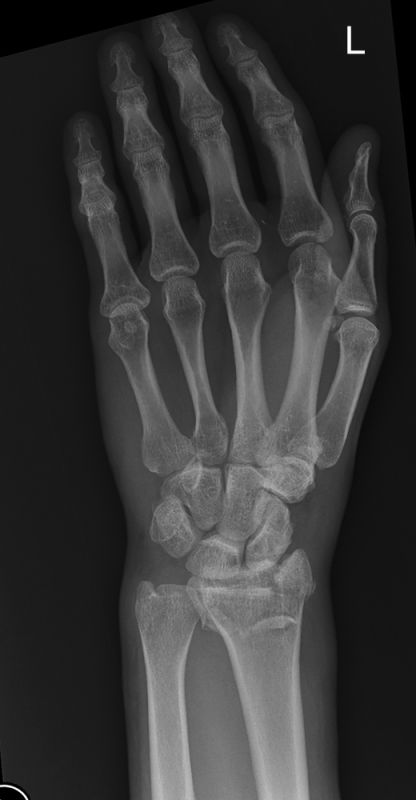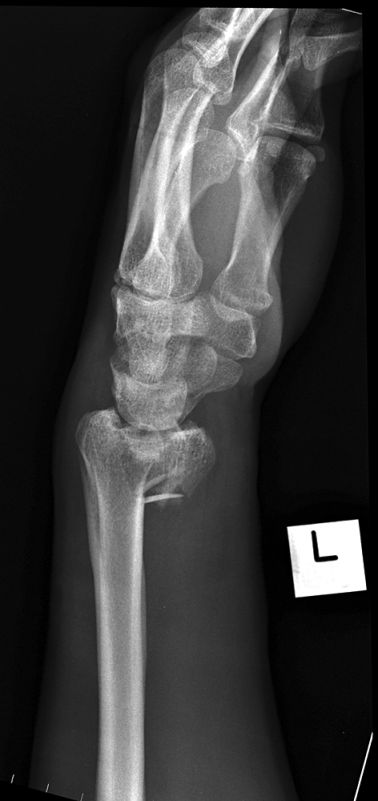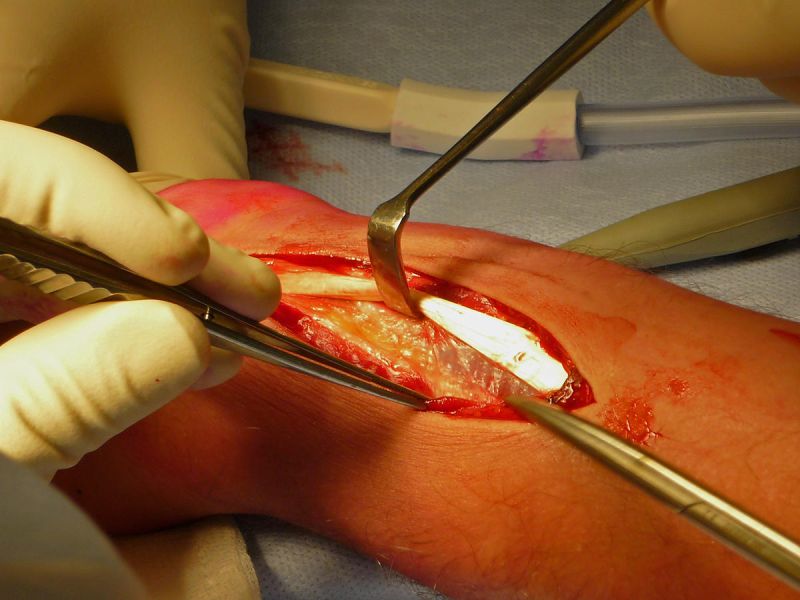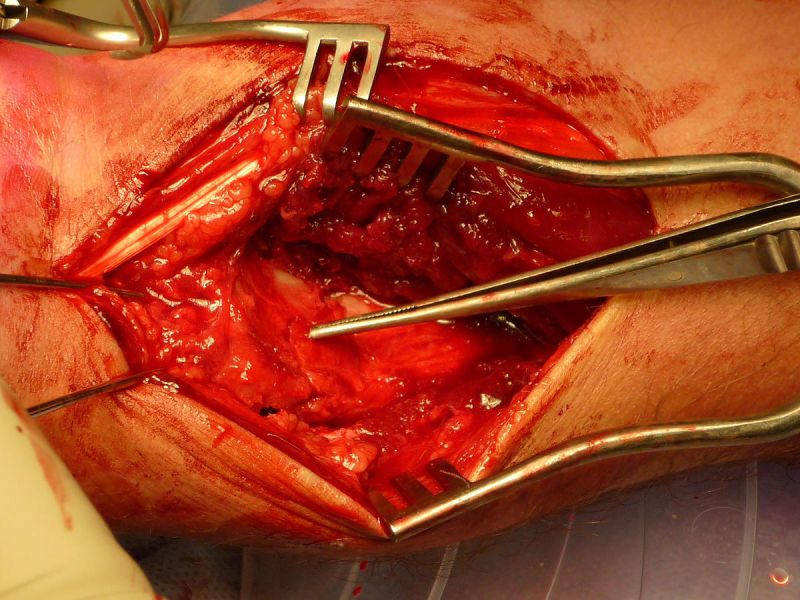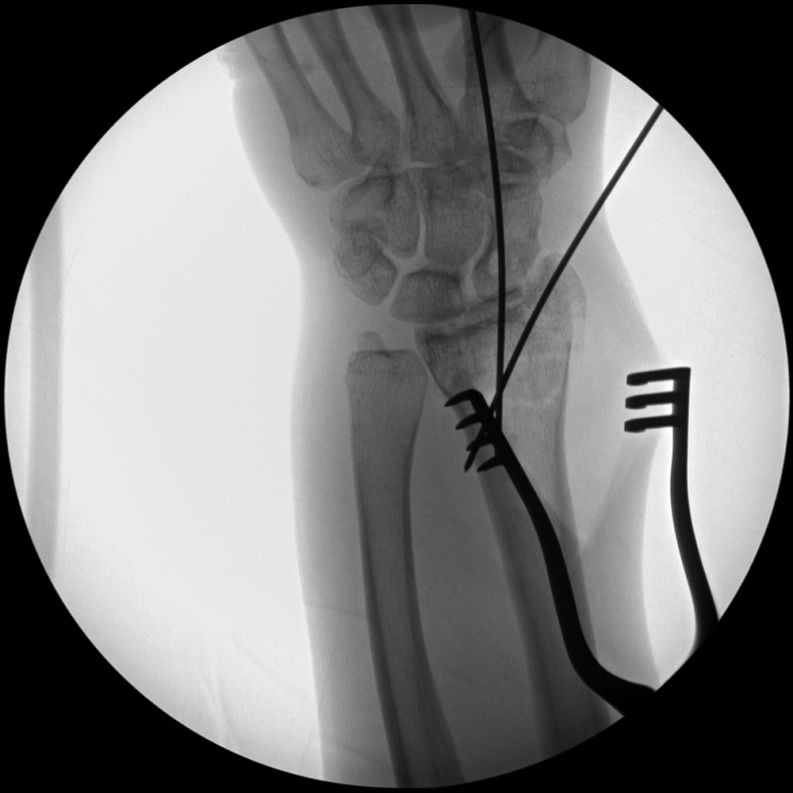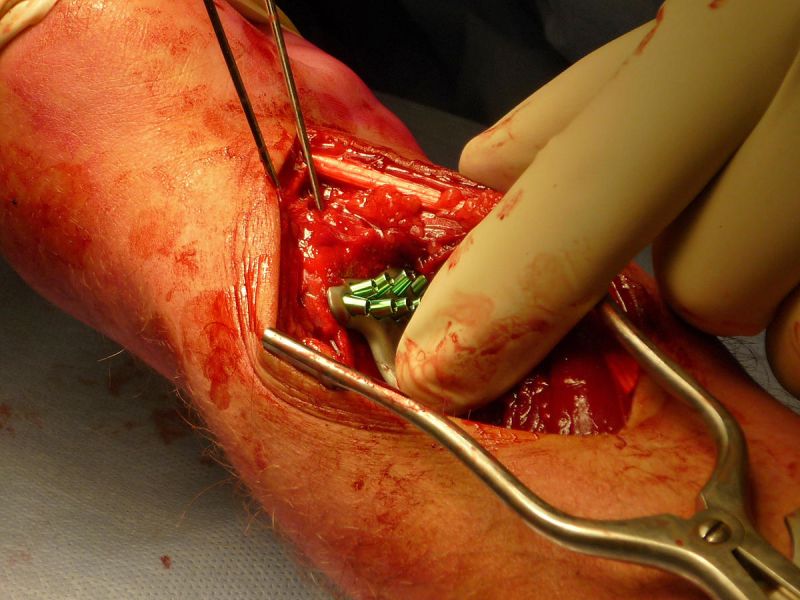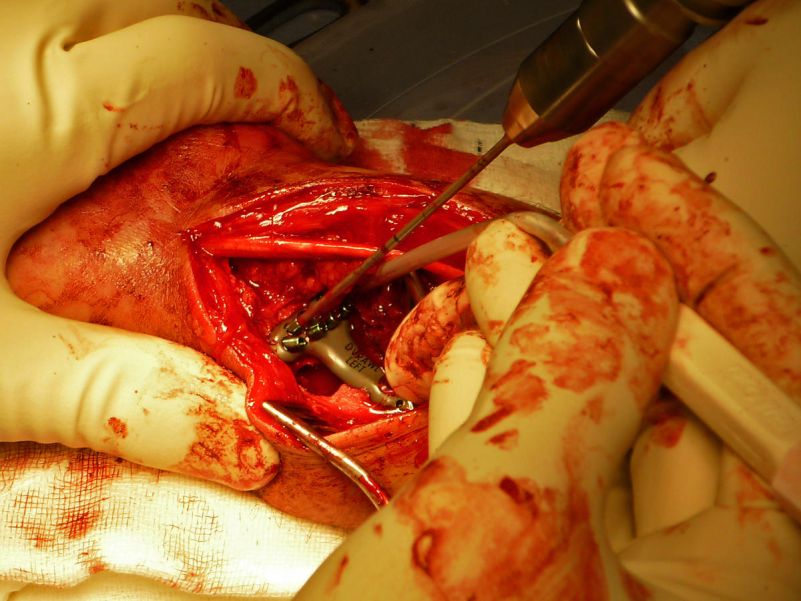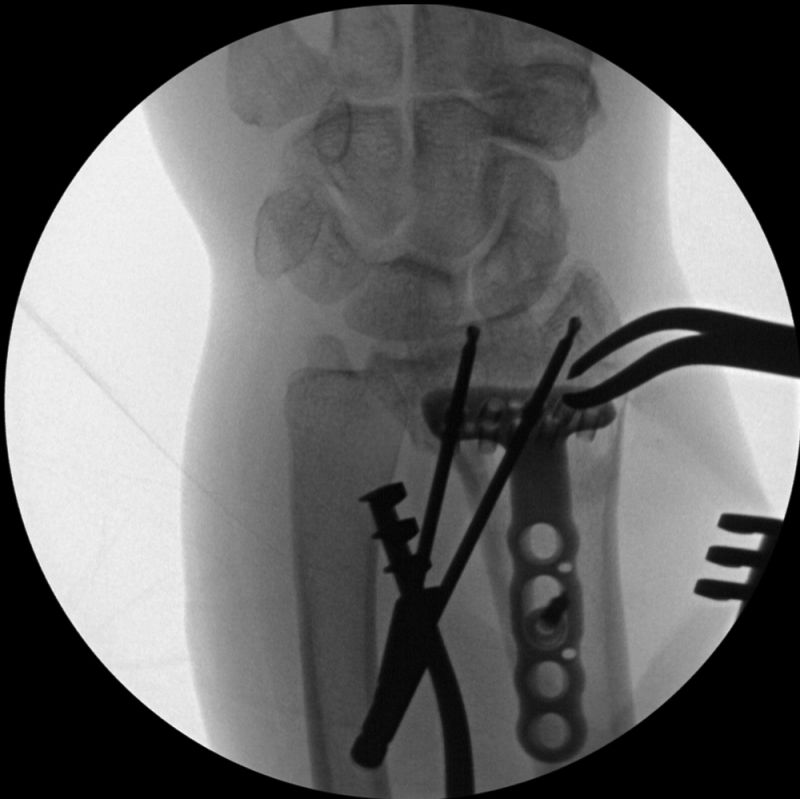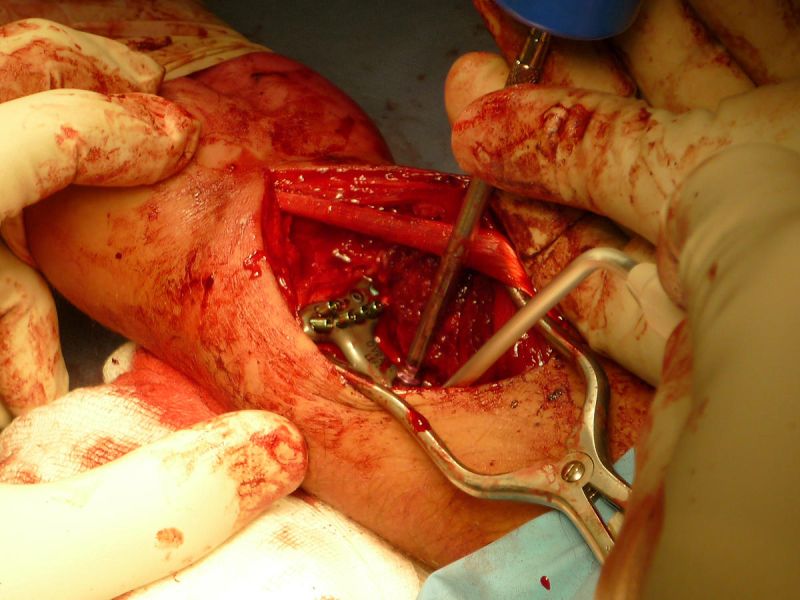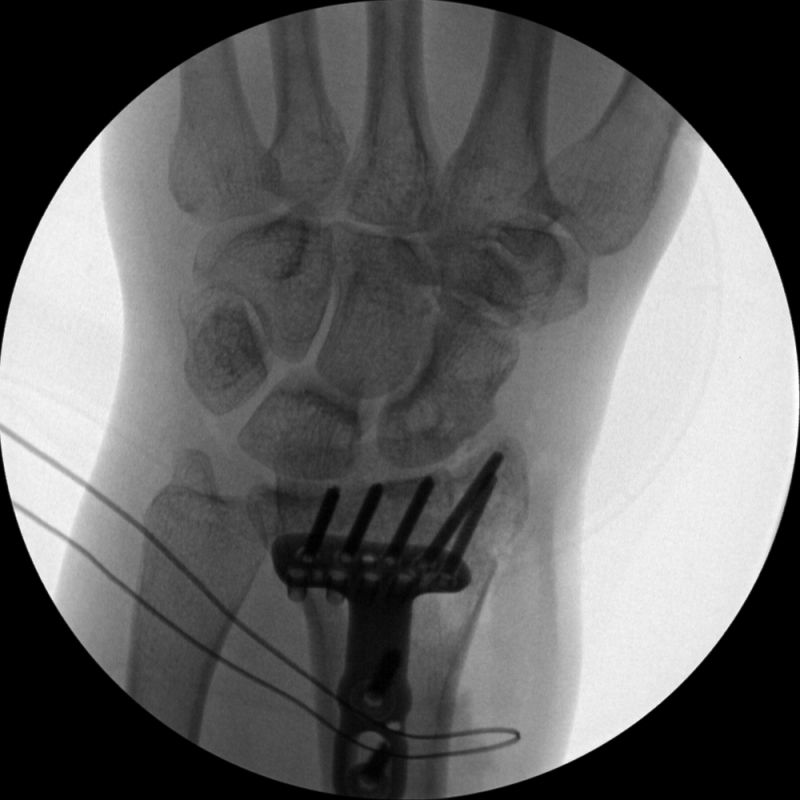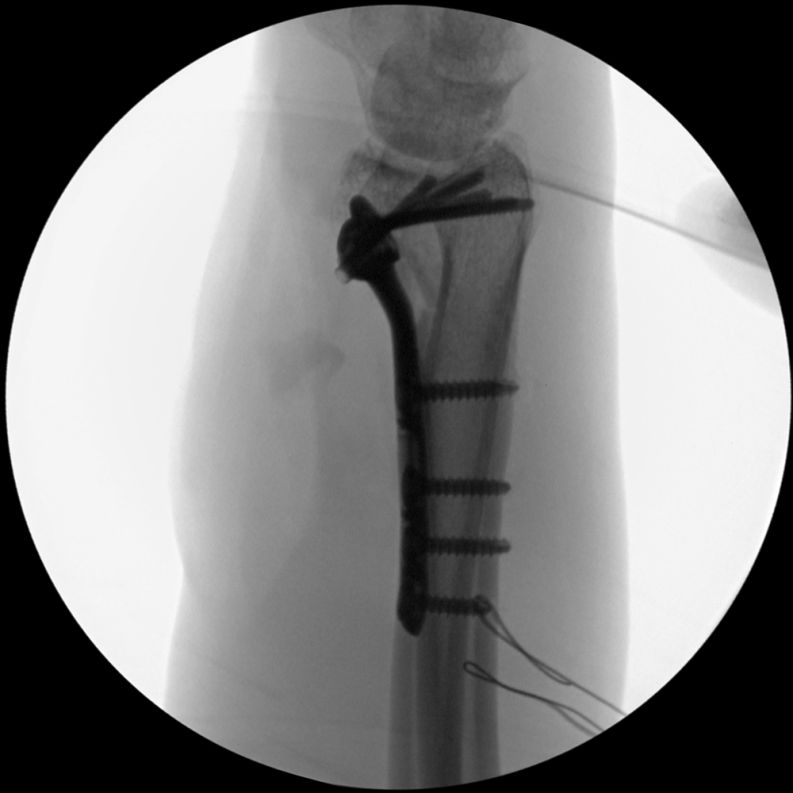Operative Imaging for Distal Radius Fracture Volar Plate Surgery
Jump to navigation
Jump to search
--- under construction---
IntroductionAnatomyGood theatre radiography requires a sound knowledge of the radiographic equipment (mobile image intensifier is commonly used) and the surgical procedure. Radiographers who are familiar with the surgical procedure will require less direction- they are able to anticipate what is required and the operating theatre experience is more likely to be a meaningful professional experience. This page considers the reduction and immobilisation of a distal radius fracture via a case-study.
Case 1
Technique Notes
- An overcouch technique should generally be used for small anatomy such as the wrist
- Laser assisted centring should be employed if available.
- Ask the surgeon where he/she would like the Image intensifier and screen positioned.
- Use the minimum dose setting which will provide an adequate image.
- The surgeon must be able to see the distal fragments clearly- it is important that the patient not be left with
- a large step in the radial articular surface.
- a large separation of fragments
- radial shortening
- Magnification (smaller field size) should be used if the anatomy is not sufficiently well demonstrated (the surgeon should not have to walk over to the image intensifier screen to see the image adequately). Equally, magnification should not be employed if not required because it increases patient radiation dose.
- It is prudent to use a higher dose mode (higher quality) for the final images (only) which are kept as a record of the final position
- You may note that the surgeon adjusts the PA and lateral wrist position to account for the palmar tilt (PA projection) and radial incination (lateral projection)- this will afford improved demonstration of the radiocarpal joint. (see discussion here)
